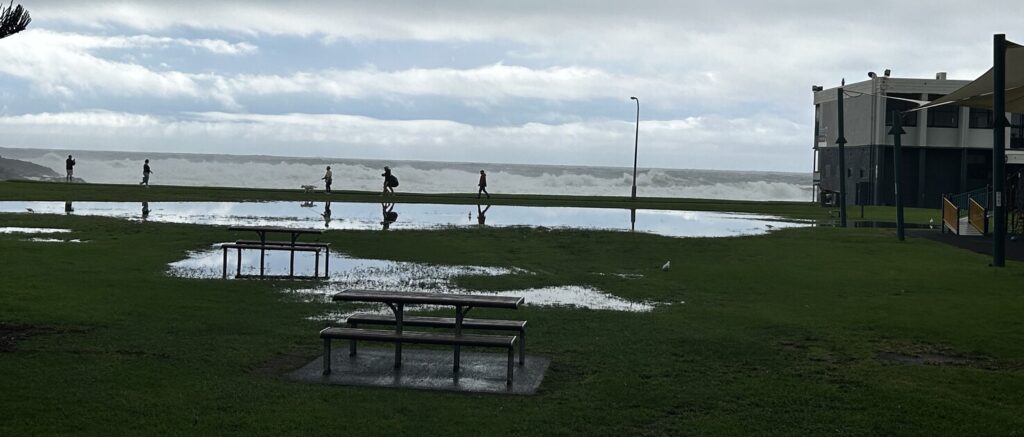The entire South Coast region is still recovering from one of the heaviest deluges in years on Friday and Saturday 5-6 April, with some areas receiving more than 300mm of rain.
The wild weather cut off roads and railway lines and caused major disruptions along the coast.
According to the Bureau of Meteorology the heaviest falls were at Lake Illawarra, which received 337mm during the two days between Friday and Saturday, 87 on Friday and 250mm on Saturday.
The intensity of the event took many locals by surprise, particularly as the sun came out later on Saturday after what felt like cyclonic conditions.
The second heaviest falls were at Macquarie Pass, which was closed on Saturday, causing major delays, but had reopened by Sunday.
Macquarie Pass saw 90mm on Friday and 239mm on Saturday. Robertson at the top of the escarpment also saw heavy falls, 87mm on the Friday and 196mm on the Saturday.
Kiama itself got off relatively lightly, with 109mm across the two days, 12 on Friday and 97 on Saturday.
Severe weather warnings were issued for an area stretching from Morrisett north of Sydney to Bega on the South Coast.
Some meteorologists use the term “Black Nor’easter” to describe the dark, moisture-laden clouds that travel in from the north-east and were responsible for the inky blackness of the skies prior to the sunrise on Saturday morning.
A cool pool of air coming from across the Great Australian Bight produced a low-pressure system over south-eastern Australia at the same time as a moisture-rich coastal trough – spurred by balmy ocean temperatures – formed off the coast of NSW and south-east Queensland.
Winds peaked in Kiama at 72 kilometres per hour at 5.30am on Saturday morning, while at Bellambi their peak winds of 70km per hour hit at 1am.
Dave Hall, a local Jamberoo resident, said the event was catastrophic for the town.
“The Golf Club has been decimated,” he said. “It is going to take a long time for it to recover. The power of it was just incredible.
“One guy had to be pulled out of his car. He got stuck in the water near Serpentine Creek, and someone dived in and got him out before the car was swept about a kilometre down the creek.
“At Kevin Walsh oval, the exterior fencing was ripped out of its foundation.
“I have never seen so much fencing ripped down. The farmers have to put all their fences back up. There is a lot of work to be done.”
Sports fields remained closed over the weekend and most remained closed on Monday.
A spokesman for the Kiama Council said Surf Beach was open but swimmers and surfers should be aware of water quality. “The standard advice is to wait three days after a major weather event,” he said.
He said Council staff had cleared debris from Jamberoo Mountain Road, including removing a tree for safety.
Local roads were reopened quickly, except for Swamp Road in Jamberoo, which remained closed due to water over the road. The low lying nature of the surrounding country, dominated by dairy farms, makes it extremely prone to flooding.
Local state member for Kiama Gareth Ward called for urgent flood relief following the inundation of the southern Illawarra and the Shoalhaven at the weekend.
Mr Ward called on the NSW government to declare a natural disaster for the region. “These floods have severely impacted my local residents, primary producers and businesses,” he said.
“I’m also asking businesses to be patient with employees who may have been impacted by storms and ensure they can take leave to repair damage, or in some cases, relocate their homes entirely.
“Insurance companies need to come to the party, honour policies and pay out on claims quickly so that people can get on with their lives. Anyone who feels that their insurance company is not honouring their policy should feel free to contact me.”
